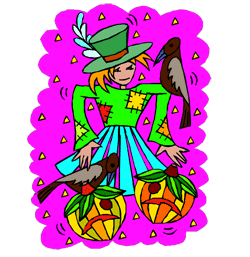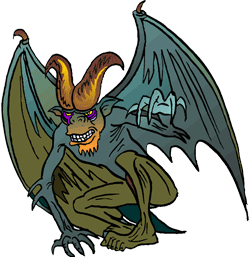What is Young Adult Horror? Answers for Interested Readers and Bemused Writers
Young Adult horror is an interesting animal. It’s not paranormal romance–our monsters are monsters, not friends or objects of desire. It’s not blood spatter and lascivious gore–that’s too adult. Young adult horror is… horror that appeals to young adults!
 First, it’s got to be YA. Many authors– from the acclaimed Suzanne Collins to the lowly I– have been surprised to find that their books marketed as YA, when in writing the novel they meant no such thing. If your protagonists are teens, then expect that your work will be classified as YA, regardless of your theme or intent. Any coming-of-age or high school story fits the bill, regardless if the setting is a fictional school for wizards, an alien world, or a post apocalyptic wasteland.
First, it’s got to be YA. Many authors– from the acclaimed Suzanne Collins to the lowly I– have been surprised to find that their books marketed as YA, when in writing the novel they meant no such thing. If your protagonists are teens, then expect that your work will be classified as YA, regardless of your theme or intent. Any coming-of-age or high school story fits the bill, regardless if the setting is a fictional school for wizards, an alien world, or a post apocalyptic wasteland.
Beyond that, young adult novels deal with young adult issues. From identity to insecurity to bullying to unwanted responsibility to striving for a dream, there aren’t many literary conflicts that can’t be YA with the right treatment. “The Hate List” and “A Wrinkle in Time” are both YA fiction, as is “The Secret Life of Bees” (though in this beekeeping author’s opinion, the latter contained too much secret life and not enough bees.) As disparate as three books can be, they share a common bond: issues that matter to young adults’ psyches and/or their daily lives. They are YA fiction for exactly the reasons that “Imajica,” “It,” and “The Road” aren’t.
Young adult novels can appeal to adults, and the best of them will. Loss, love, family, loyalty, friendship, duty, and sacrifice are called “universal themes” for a reason. YA fiction need not be juvenile, and the best of it doesn’t talk down to its audience. Trust the average teenage reader to be much like the average adult reader– perceptive, intelligent, and not very tolerant of cheap gimmicks. Believable, empathetic characters and a great plot are just as important in YA fiction as in adult fiction.
On a side note, there’s a lot of talk in writer’s circles about word count and YA novels, but I bear it little credence. Comparing “Harry Potter” to Terry Trueman’s disturbing but excellent novel “Stuck In Neutral,” I’m comfortable with recommending “40,000 to eighty bazillion words” as the appropriate length for a YA novel. More so than in adult fiction, protagonist and theme trump word count, with good writing and good story being, of course, paramount.
 Second, some things will disqualify a book as young adult. Too much gore, much of any sex (and any explicit sex at all), and antiquated sesquipedalian verbosity will rule a book out, though the last may rule it out of publication at all, so it hardly counts. “The Hate List” reflects on terrible violence, and “Twilight” is drowning in juvenile notions of what sex should be, but neither are explicit in the sense of Bret Easton Ellis’s “American Psycho” or Laurel K. Hamilton’s “Anita Blake: Vampire Hunter” novels.
Second, some things will disqualify a book as young adult. Too much gore, much of any sex (and any explicit sex at all), and antiquated sesquipedalian verbosity will rule a book out, though the last may rule it out of publication at all, so it hardly counts. “The Hate List” reflects on terrible violence, and “Twilight” is drowning in juvenile notions of what sex should be, but neither are explicit in the sense of Bret Easton Ellis’s “American Psycho” or Laurel K. Hamilton’s “Anita Blake: Vampire Hunter” novels.
Young Adult horror emphasizes suspense, dread, and hope– even if it’s false hope– in a happy ending. The monsters are real, even if they’re human, and thus the dread is real… There might be a body count, but the details of death are left to the imagination. The dread is more Alfred Hitchcock than Wes Craven, more Identity than Saw. There can be violence, and gore, and even rape or other terrible aspects of the human (and inhuman) condition, but more is left to the imagination in YA fiction. (Whether or not this is ultimately a good thing I’ll leave to the nightmares of the young and the paychecks of their psychologists.)
Third, to be YA horror, it’s got to be horror. The only category more diverse than “YA” is “books.” YA horror must upend the teenaged world, and carry it beyond the normal into the realms of the horrific.
This can be the supernatural-weird like H.P. Lovecraft and Clive Barker, or the all-too-mundane like Thomas Harris and Jeff Lindsay, but it’s got to bring that sense of dread that horror readers crave. Horror is evocative, emotional and visceral, that hungry thing in the shadows that you can’t quite see… but beyond that the definition is as broad as the genre– if it makes you sleep with the light on, it fits the bill.
So there you have it. YA horror is, as advertised, horror for young adults. It’s a flexible genre marked by subtlety, universal themes, and spine-tingling dread. So go on, curl up with a good YA horror yarn. Just don’t forget the light.
Patrick Freivald is an author, high school teacher (physics, robotics, American Sign Language), and beekeeper. He lives in Western New York with his beautiful wife, two birds, two dogs, too many cats, and several million stinging insects. A book reviewer for BuyZombie.com and a member of the HWA, he’s always had a soft spot for slavering monsters of all kinds.
His YA horror novel “Twice Shy” was published in October 2012 from JournalStone. His short fiction has appeared in Flash Fiction Online and The Uninvited Magazine. His novella, “Love Bites,” a prequel to “Twice Shy,” was e-published by Pterotype Digital Media. “Twice Shy” is his debut novel. There will be more.




